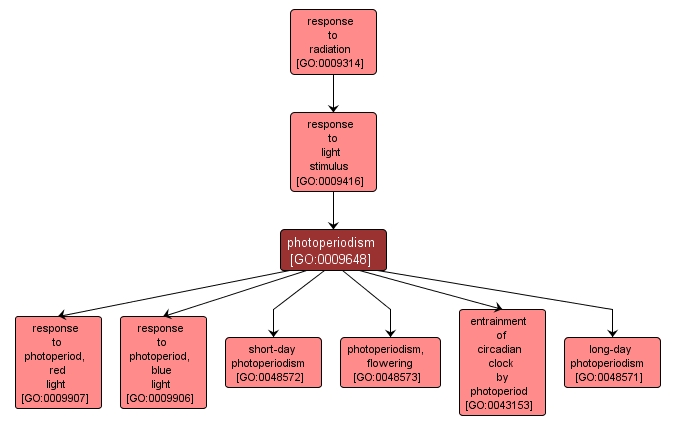| Desc: |
A change in state or activity of the organism (in terms of movement, secretion, enzyme production, gene expression, etc.) as a result of detection of, or exposure to, a period of light or dark of a given length, measured relative to a particular duration known as the 'critical day length'. The critical day length varies between species. |














